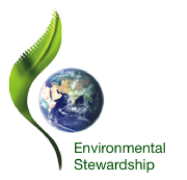Composting? Really?
Q: Why would I want to Compose?
A: There are many good reasons to start composting. It is very beneficial from an agricultural and environmental standpoint. Most significant benefits are:
- Improves soil structure, benefits root growth and water retention.
- Provides a source of slow-release organic fertilizer for your plants, helps fight diseases.
- Reduces 20-40% of the waste that ends up in the landfill. This ALONE is a fantastic reason for composting - why would you throw this organic material in a landfill?
- It’s fun and satisfying to know you’re doing your part to conserve earth’s resources
Q: I want to compost, but is it hard and how would I get started?
A: It’s really quite easy and it won’t take you a lot of time to get started. You’ll need a compost bin or an area in your yard for a compost heap, ideally in a sunny or partly sunny spot. You want it easily accessible all year long.
Q: OK, so what do I put in the compost bin?
A: The two main categories of ingredients are “greens and browns.” You will need both of these materials plus water to make compost.
- Green - Vegetable and fruit scraps, coffee grounds/filters, tea leaves/bags, garden waste, fresh weeds without seeds, fresh grass clippings.
- Brown - Dry leaves, dry straw and hay, sawdust, woodchips from untreated wood, twigs, dried grass clippings, shredded paper, napkins, newspaper (no petroleum ink, Soy ink is OK)
- Other - Eggshells (crushed), plain rice, bread, hair, wool, cotton, lint
- Do not compost - Meats, fish, eggs, dairy products, grease, bones, pet and human waste, glass, plastic/petroleum products, metals, synthetic materials, large branches and wood chunks, wood ashes, lime
Q: Is that all I need to know to get started?
A: A few other things you need to know about the food you feed your compost:
- Start your pile with a generous layer of browns on the bottom.
- Alternate the layers of greens and browns: 2 parts green and 1 part brown material.
- The smaller the material the faster it will break down.
- If you don’t have leaves you can use sawdust, straw or even shredded newspaper for browns.
- Add water and turn the materials periodically. Moisture and oxygen are required components in composting. You can use a pitch fork or place your materials into a tumbler to artificially aid the aeration of your pile. You want to do this about every 3-5 days.
- You can also add a shovel-full of soil at any stage. This will introduce soil organisms into your pile or bin and will act as an accelerator.
Q: Is it Finished Yet?
A: The composting process can take anywhere from 3 – 8 months depending on the mix of materials, moisture and air. Generally, it is ready to use when it is dark brown, smells like earth and crumbles in your hand.
Q: Where can I find more information?
A: Types of bins: http://greenactioncentre.ca/content/compost-bin-options/
How to Compost Video: http://greenactioncentre.ca/content/how-to-compost-video/
Composting basics: http://www.compostguy.com/composting-basics/#getting-started
Composting basics: http://www.howtocompost.org/info/info_composting.asp
- Log in to post comments
Recent News
Sunday Worship Service - July 30 at 10:00 am
July 30, 2023 - 9:51am
Sunday Worship Service - July 23 at 10:00 am
July 23, 2023 - 9:48am
Sunday Worship Service - July 16 at 10:00 am
July 16, 2023 - 10:17am
Vacation Bible School
July 14, 2023 - 10:10pm
Sunday Worship Service - July 9 at 10:00 am
July 9, 2023 - 9:53am





